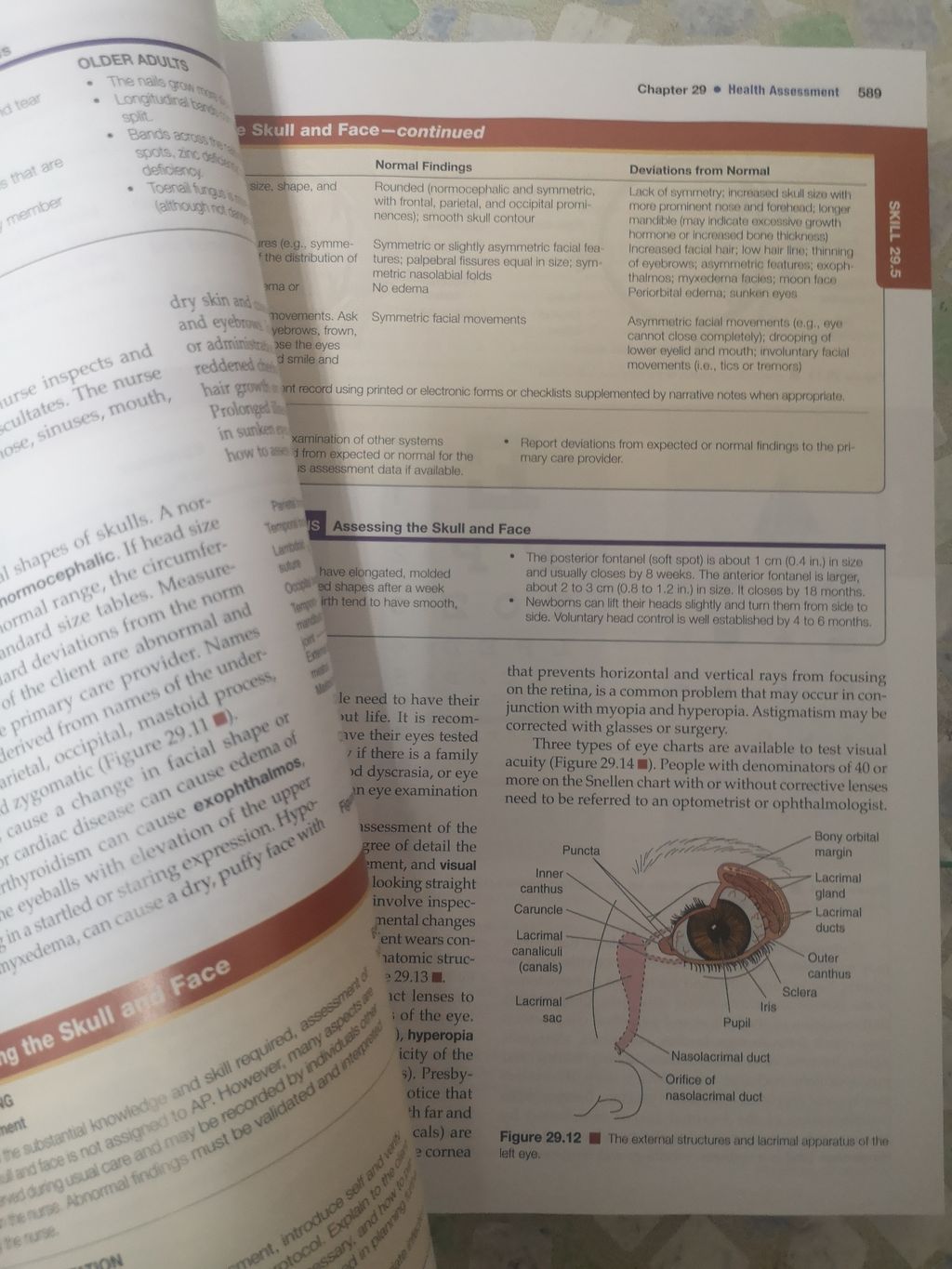Table of contents
UNIT 1: THE NATURE OF NURSING
1. Historical and Contemporary Nursing Practice
2. Evidence-Based Practice and Research in Nursing
3. Legal Aspects of Nursing
4. Values, Ethics, and Advocacy
UNIT 2: CONTEMPORARY HEALTH CARE
5. Healthcare Delivery Systems
6. Community Nursing and Care Continuity
7. Home Health Nursing Care
8. Electronic Health Records and InformationTechnology
UNIT 3: THE NURSING PROCESS
9. Critical Thinking and Clinical Reasoning
10. Assessing
11. Diagnosing
12. Planning
13. Implementing and Evaluating
14. Documenting and Reporting
UNIT 4: Integral Aspects of Nursing
15. Caring
16. Communicating
17. Teaching
18. Leading, Managing, and Delegating
UNIT 5: HEALTH BELIEFS AND PRACTICES
19. Health Promotion
20. Health,Wellness, and Illness
21. Culturally Responsive Nursing Care
22. Complementary and Alternative HealingModalities
UNIT 6: LIFESPAN DEVELOPMENT
23. Concepts of Growth and Development
24. PromotingHealth from Conception Through Adolescence
25. Promoting Health in Young and Middle-AgedAdults
26. Promoting Health in Older Adults
27. PromotingFamily Health
UNIT 7: ASSESSING HEALTH
28. Vital Signs
29. Health Assessment
30. Pain Assessment andManagement
UNIT 8: INTEGRAL COMPONENTS OF CLIENT CARE
31. Asepsis and Infection Prevention
32. Safety
33. Hygiene
34. Diagnostic Testing
35. Medication Administration
36. Skin Integrity and Wound Care
37. Perioperative Nursing
UNIT 9: PROMOTING PSYCHOSOCIAL HEALTH
38. Sensory Perception
39. Self-Concept
40. Sexuality
41. Spirituality
42. Stress and Coping
43. Loss, Grieving, and Death
UNIT 10: PROMOTING PHYSIOLOGIC HEALTH
44. Activity and Exercise
45. Sleep
46. Nutrition
47. Urinary Elimination
48. Fecal Elimination
49. Oxygenation
50. Circulation
51. Fluid, Electrolyte, and Acid-Base Balance
1. Historical and Contemporary Nursing Practice
2. Evidence-Based Practice and Research in Nursing
3. Legal Aspects of Nursing
4. Values, Ethics, and Advocacy
UNIT 2: CONTEMPORARY HEALTH CARE
5. Healthcare Delivery Systems
6. Community Nursing and Care Continuity
7. Home Health Nursing Care
8. Electronic Health Records and InformationTechnology
UNIT 3: THE NURSING PROCESS
9. Critical Thinking and Clinical Reasoning
10. Assessing
11. Diagnosing
12. Planning
13. Implementing and Evaluating
14. Documenting and Reporting
UNIT 4: Integral Aspects of Nursing
15. Caring
16. Communicating
17. Teaching
18. Leading, Managing, and Delegating
UNIT 5: HEALTH BELIEFS AND PRACTICES
19. Health Promotion
20. Health,Wellness, and Illness
21. Culturally Responsive Nursing Care
22. Complementary and Alternative HealingModalities
UNIT 6: LIFESPAN DEVELOPMENT
23. Concepts of Growth and Development
24. PromotingHealth from Conception Through Adolescence
25. Promoting Health in Young and Middle-AgedAdults
26. Promoting Health in Older Adults
27. PromotingFamily Health
UNIT 7: ASSESSING HEALTH
28. Vital Signs
29. Health Assessment
30. Pain Assessment andManagement
UNIT 8: INTEGRAL COMPONENTS OF CLIENT CARE
31. Asepsis and Infection Prevention
32. Safety
33. Hygiene
34. Diagnostic Testing
35. Medication Administration
36. Skin Integrity and Wound Care
37. Perioperative Nursing
UNIT 9: PROMOTING PSYCHOSOCIAL HEALTH
38. Sensory Perception
39. Self-Concept
40. Sexuality
41. Spirituality
42. Stress and Coping
43. Loss, Grieving, and Death
UNIT 10: PROMOTING PHYSIOLOGIC HEALTH
44. Activity and Exercise
45. Sleep
46. Nutrition
47. Urinary Elimination
48. Fecal Elimination
49. Oxygenation
50. Circulation
51. Fluid, Electrolyte, and Acid-Base Balance
×






